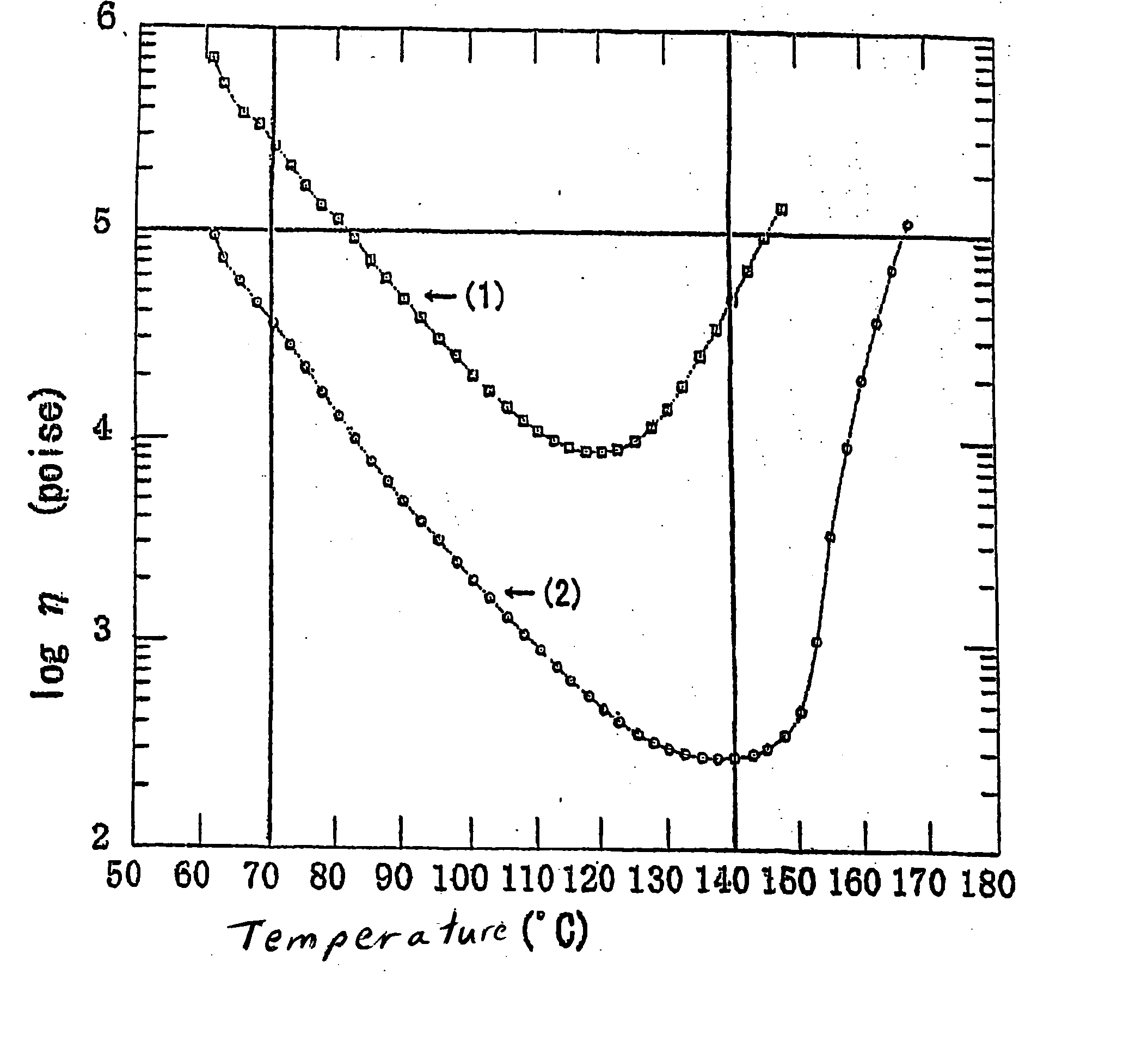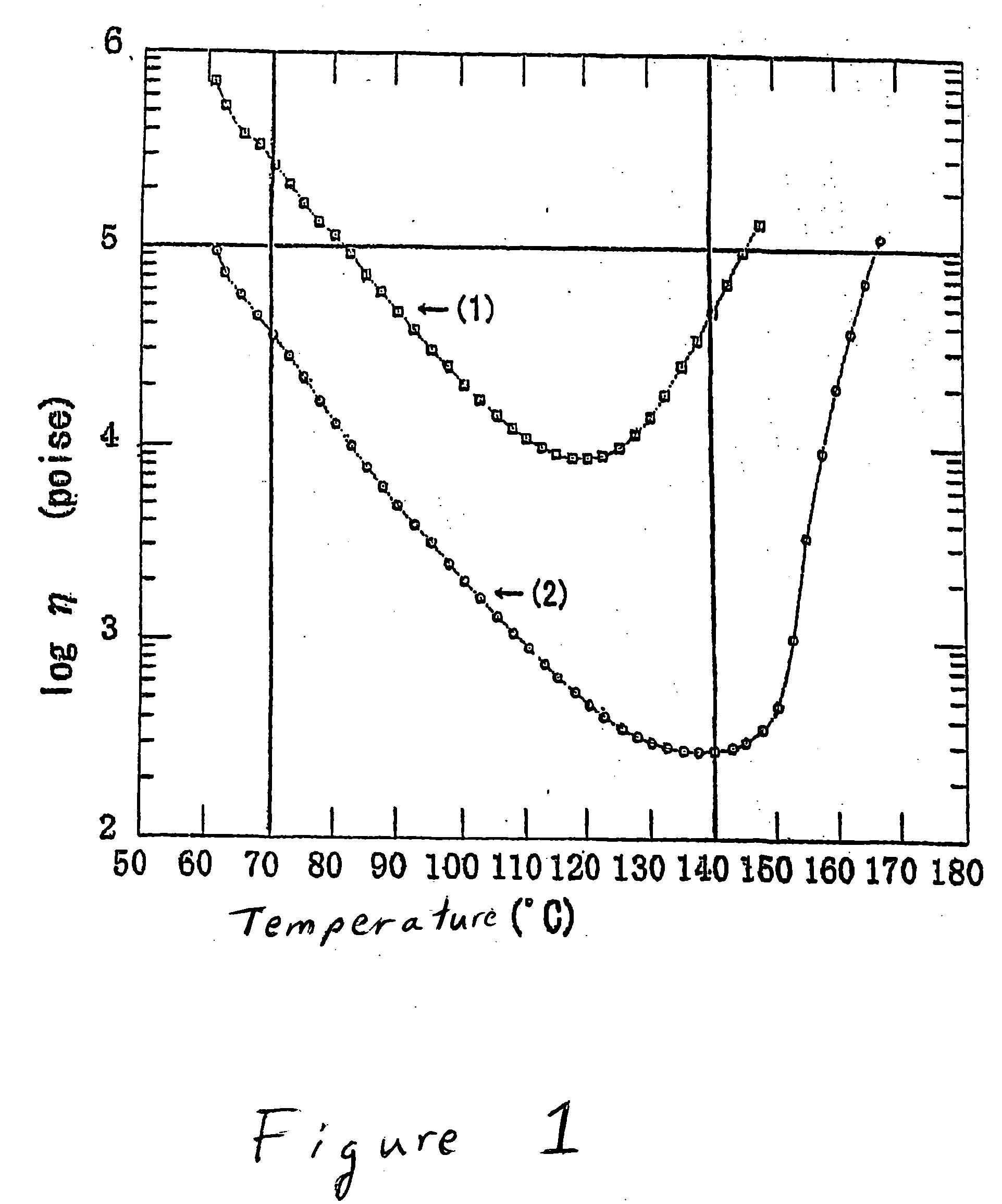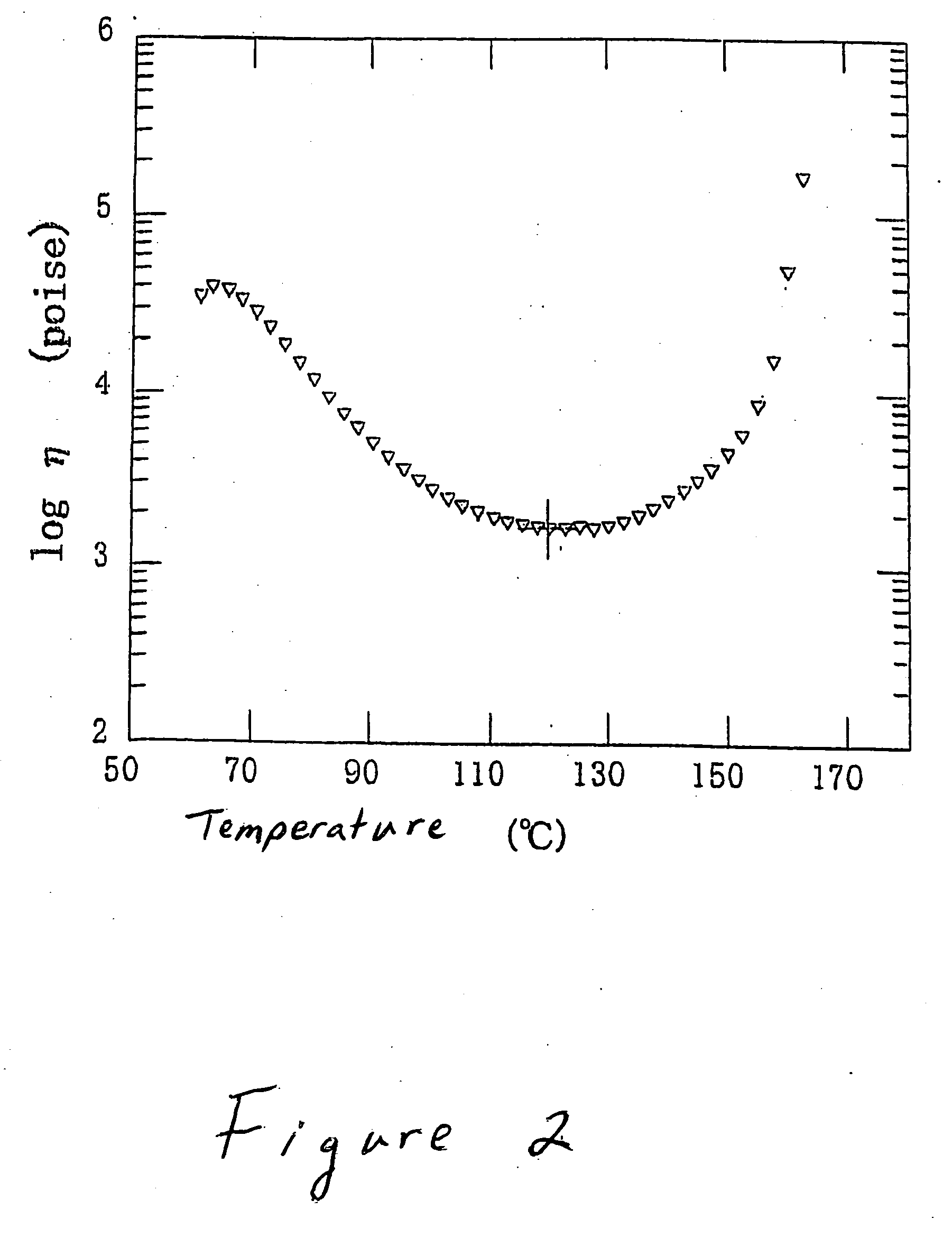Adhesive film for use in multilayer printed wiring board and method of producing multilayer printed wiring board
a technology of adhesive film and wiring board, which is applied in the direction of synthetic resin layered products, metal layered products, domestic applications, etc., can solve the problems of high exposure of inorganic filler, large exposure of shape and processing speed, and easy generation of cracks or the like, and achieves the effects of convenient preparation, high resin fluidity, and convenient preparation
- Summary
- Abstract
- Description
- Claims
- Application Information
AI Technical Summary
Benefits of technology
Problems solved by technology
Method used
Image
Examples
reference example 1
[0153] Twenty parts of liquid bisphenol A type epoxy resin (“Epikote 828EL” manufactured by Japan Epoxy Resin Co., Ltd. and having an epoxy equivalent of 185), 20 parts of brominated bisphenol A type epoxy resin (“YD-500” manufactured by Tohto Kasei Co., Ltd. and having an epoxy equivalent of 500), 20 parts of cresol novolak type epoxy resin (“EPICLON N-673” manufactured by Dainippon Ink and Chemicals, Inc. and having an epoxy equivalent of 215), and 15 parts of end-epoxidated polybutadiene rubber (“Denarex R-45EPT” manufactured by Nagase Kasei Kogyo K.K.) were dissolved into methyl ethyl ketone under heating with stirring. Thereto, 50 parts of brominated phenoxy resin varnish (“YPB-40-PXM40” manufactured by Tohto Kasei Co., Ltd., containing a nonvolatile component of 40% by weight and having a solvent composition of xylene: methoxypropanol: methyl ethyl ketone=5:2:8), 4 parts of 2,4-diamino-6-(2-methyl-1-imidazolylethyl)-1,3,5-trazine isocyanuric acid adduct (as an epoxy curing age...
reference example 2
[0157] The dynamic viscoelastic modulus of the thermosetting resin composition made of a layer A and a layer B prepared according to Example 1 described below (two-layered film, having a thickness of: 10 μm+50 μm=60 μm) was measured. The measurements were performed by use of “Dynamic Rheometer Rheosol-G3000” manufactured by UBM Co., Ltd. the same as that used in Reference Example 1. Similarly to Reference Example 1, the measurements were carried out with the temperature rise rate during the measurement set at 5° C. / minute, the measurement starting temperature at 60° C., a measuring temperature interval at 2.5° C., and a vibration at 1 Hz / deg.
[0158] The results are shown in FIG. 2.
example 1
on of an Adhesive Film
[0159] (layer A): Twenty parts of liquid bisphenol A type epoxy resin (“Epikote 828EL” manufactured by Japan Epoxy Resin Co., Ltd. and having an epoxy equivalent of 185), 20 parts of brominated bisphenol A type epoxy resin (“YD-500” manufactured by Tohto Kasei Co., Ltd. and having an epoxy equivalent of 500), 20 parts of cresol novolak type epoxy resin (“EPICLON N-673” manufactured by Dainippon Ink and Chemicals, Inc. and having an epoxy equivalent of 215), and 15 parts of end-epoxidated polybutadiene rubber (“Denarex R-45EPT” manufactured by Nagase Kasei Kogyo K.K.) were dissolved in methyl ethyl ketone under heating with stirring. Thereto, 50 parts of brominated phenoxy resin varnish (“YPB-40-PXM40” manufactured by Tohto Kasei Co., Ltd. containing a nonvolatile component by 40% by weight and having a solvent composition of xylene: methoxypropanol: methyl ethyl ketone=5:2:8), 4 parts of 2,4-diamino-6-(2-methyl-1-imidazolylethyl)-1,3,5-triazine isocyanuric acid...
PUM
| Property | Measurement | Unit |
|---|---|---|
| pressure | aaaaa | aaaaa |
| pressure | aaaaa | aaaaa |
| temperature | aaaaa | aaaaa |
Abstract
Description
Claims
Application Information
 Login to View More
Login to View More - Generate Ideas
- Intellectual Property
- Life Sciences
- Materials
- Tech Scout
- Unparalleled Data Quality
- Higher Quality Content
- 60% Fewer Hallucinations
Browse by: Latest US Patents, China's latest patents, Technical Efficacy Thesaurus, Application Domain, Technology Topic, Popular Technical Reports.
© 2025 PatSnap. All rights reserved.Legal|Privacy policy|Modern Slavery Act Transparency Statement|Sitemap|About US| Contact US: help@patsnap.com



